Zostera marina meadows support diverse epifaunal communities that play essential roles in nutrient cycling, grazing control, and energy transfer across trophic levels. However, these ecosystems are increasingly affected by anthropogenic pressures such as eutrophication, habitat modification, and changes in trophic dynamics. The objectives of this study were to evaluate long-term and seasonal shifts in epifaunal community structure by comparing two sites in southern Norway between 1999 and 2024, discuss the potential drivers and ecological implications behind these changes.
Significant shifts in community structure over time were observed, with notable changes in species composition and functional roles. Total epifaunal density decreased at Klauva but increased at Langerumpa. Bivalve dominance, particularly by Mytilus edulis, decreased sharply. Functional analyses showed a decline in suspension feeders and an increase in grazers and deposit feeders. Changes in seasonal patterns of epifaunal abundance were site-specific and corresponded with fluctuations in Z. marina biomass.
Contrary to expectations under strong top-down control, mesograzers increased in abundance, indicating reduced predation pressure and elevated resource availability. These findings underscore the importance of long-term, multi-seasonal monitoring in detecting ecological change and highlight the need to understand how combined bottom-up and top-down forces shape seagrass-associated faunal communities under ongoing anthropogenic pressures.
promotor/supervisor feedback
nothing yet




